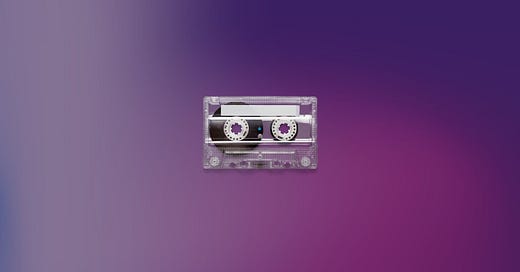How Weird Music Redefines Musical Expression
Deconstructing what's seen as weird helps you understand experimental music
Experimental music often defies easy categorization, prompting us to reconsider cultural parameters of musical legitimacy. But works people say are weird also disrupt traditional frameworks.
Unlike conventional compositions that follow predictable progressions and resolutions, experimental music resists closure. By rejecting Western musical teleology, these works place listeners in a state of productive disorientation, encouraging deeper engagement with sound.
What constitutes weird gets dissected all the time. This 2024 Reddit thread is almost an annual tradition. From environmental recordings to digitally manipulated timbres, weird music broadens the definition of music. This approach raises profound questions about the nature of sound and its role as an artistic medium.
Exploring Microtonality and Rhythmic Deconstruction
By venturing into microtonal harmonies and unconventional rhythms, experimental composers challenge the mathematical foundations of music. These techniques expose the culturally constructed nature of our musical frameworks, inviting listeners to question what makes sound "musical."
Mapping the Experimental Canon
The canon of weird music is filled with works that serve as landmarks of artistic revolution. A few instances that come to mind:
Captain Beefheart’s Trout Mask Replica
This 1969 album transcends eccentricity, using deliberate dissonance and structural complexity to critique rock music's increasing commodification. It remains a seminal example of how experimental music resists commercial palatability.
Scott Walker’s Transformation in Bish Bosch
Scott Walker's evolution from pop singer to avant-garde composer demonstrates how artists can radically redefine their creative identities. Albums like Bish Bosch challenge listeners to embrace new paradigms of authenticity and artistic evolution.
Contemporary Innovations in Experimental Music
Modern experimental artists continue to expand the genre’s boundaries, merging tradition with innovation.
Rashad Becker’s Traditional Music of Notional Species
By inventing folkloric music for imagined civilizations, Becker questions the authenticity and cultural assumptions embedded in traditional music, crafting a unique sonic narrative.
Schimpfluch-Commune International
Blurring the line between performance art and music, this collective explores the human body's role as a sound source. Their work provokes deep reflection on music's connection to physicality and presence.
Pierre Henry’s Schisme
As a pioneer of musique concrète, Pierre Henry bridges analog and digital sound manipulation. Schisme demonstrates the enduring relevance of this technique, offering a blueprint for contemporary sound sculpture.
Engaging with Weird Music
To fully appreciate weird music, audiences must adopt new critical frameworks that transcend passive listening:
Phenomenological Engagement
These works disrupt learned patterns of perception, challenging listeners to experience sound on a deeper, more immersive level. This approach opens new pathways for understanding how we process and relate to sonic stimuli.
Historical Contextualization
Experimental music often emerges as a response to specific cultural or historical conditions. By situating these works within their broader contexts, listeners can uncover their role as acts of resistance against prevailing aesthetic norms.
Social Dimensions
Many experimental works are rooted in collective artistic communities. Understanding these social contexts enriches our appreciation of the collaborative innovation that drives the genre.
Redefining Possibility Through Experimental Music
Experimental music serves as a vital force in today’s cultural landscape. By challenging assumed boundaries and expanding the possibilities of sound, it invites us to rethink the relationship between art and experience.
These works do more than push musical limits—they provoke us to question fundamental assumptions about creativity, authenticity, and the nature of human interaction with sound. As the music industry grows increasingly commodified and algorithmically mediated, experimental music stands as a testament to the boundless potential of human innovation.
FAQ + TLDR
What defines weird music?
Weird music challenges conventional structures, incorporates non-traditional sound sources, and explores alternative tuning systems or rhythms to push the boundaries of musical expression.
Why is experimental music important in this regard?
It fosters artistic innovation, questions cultural norms, and provides a platform for reimagining the possibilities of sound and expression.
How does weird music resist commercialization?
By rejecting traditional structures and prioritizing artistic exploration over marketability, experimental music resists the commodification of sound.
Which artists are prominent in the experimental music canon?
Notable figures include Captain Beefheart, Scott Walker, Pierre Henry, and collectives like Schimpfluch-Commune International.
What role does historical context play in weird music?
Understanding the cultural and historical conditions in which works were created and defined as weird helps illuminate their function as acts of resistance or innovation.
How can listeners engage with weird music?
Listeners can adopt a phenomenological approach, situate works within their historical context, and explore their connections to broader artistic communities.
Found Sound
Blue Veil, the new LP by Lucy Railton, is coming in April. It’s her first release to document her solo cello works. For now, you can enjoy “Phase III,” a track out now.
Recording as Das Stockhausen-Syndrom, Johann Bärenklau has stated that the project will continue following the passing of collaborator Ben Schrat. Their songs are projected to be released every three months, culminating into a double album. The latest song was just issued.
Brazil’s Bode and American artist Sage have posted what they call a eurorack improvisation.
Finland’s UTON has released four hours of improvisational violin. Let’s go.







